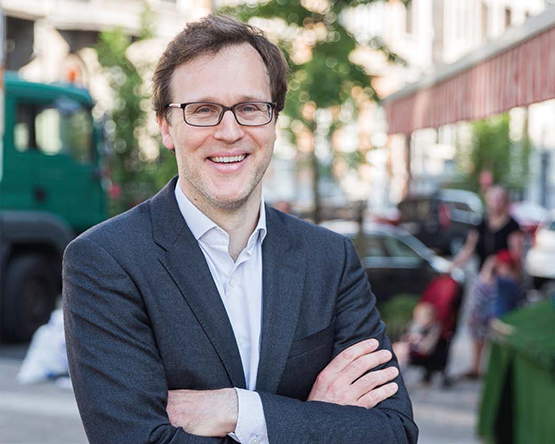 |
|
©BUSINESSEUROPE / Photo: Erik Luntang
|
“Business is fully on board with the circular economy revolution. Not only because it is good business to save resources, but also because of the strong positive impacts for both the job market and sustainability.” The official position of BusinessEurope, as voiced by their director of Industrial Affairs, Alexandre Affre, gives a crystal clear image of the extent to which European businesses are considering reforms, such as those contained in the Circular Economy Package and future EU directives related to the circular economy (CE).
Last year BusinessEurope (which is the short hand name for Confederation of European Business, a lobby group representing enterprises of all sizes in the European Union) launched a new platform called circulary.eu, for the showcasing of circular businesses. They did this at the closing session of the EU Green Jobs Summit 2017, and this year they are pushing their CE agenda even further, lobbying hard to convert the European way of doing business to the CE.
Renewable Matter met with Alexandre Affre at the insightful Circular Economy Stakeholders Event, organised by the European Economic and Social Committee in Brussels.
What is BusinessEurope’s outlook on the CE in Europe? How much is it growing and how fast?
“As BusinessEurope we are engaged with the CE because we see more and more of our members and companies either expressing an interest or already doing something related to the CE. For them it is not a buzzword, but an industrial strategy to strengthen their business. It’s coming from the bottom up, from the industrial sector, and step by step transforming the way the European economy, companies and businesses operate. For us this represents a megatrend that we expect to continue to grow in the future. We showcase CE business initiatives to help our members become truly circular or to upgrade their activities in the CE.”
Has the Circular Economy Package accelerated the process of bringing companies into the CE?
“The Package that has been adopted is a positive step. We expect it to boost this trend. What we like in the Package is the bottom up approach that has helped solve concrete challenges faced by companies.”
What is the most important outcome?
“For companies to have greater access to recycled materials. Businesses have growing commitments to use more recycled materials in their products. Therefore, the challenge resides in the quantity and quality of materials supplied. It is necessary to reach these goals progressively, committing to intermediate targets whereby, in the next couple of years, a company can achieve the goal of using 30% or 40% recycled material in their productive processes. I think we shouldn’t just create a material flow at a national level, but look for suppliers across the EU. There are some challenges concerning the flow of certain materials. But, I am sure we can overcome them.”
In terms of the CE in Europe, which sector do you see developing fastest?
“Definitely waste management companies in Western European countries. It is more difficult in the Central and Eastern countries because – and we have to respect and accept this – it is also a cultural issue. However, I think the CE Package takes this into consideration. Things are changing but not all countries are moving at the same speed. That’s why as BusinessEurope we are trying to engage further in those countries where the speed of the change is a little slower. We are planning this year’s events and workshops around these very countries, suggesting possible solutions for businesses and companies.”
Are financial institutions interested in the CE?
“Investors are looking into this more and more. Sustainable finance is becoming a trend. This is already happening and is expected to continue to grow.”
Do we need more investors or more taxes to boost innovation?
“Let’s be careful about policy solutions (including taxes) that can create more problems than they solve.”
Are companies interested in labels, certifications or measurement strategies to really assess their circularity and promote circular investment?
“I can’t give any figures, but from all the talks and discussions and feedback I have, many companies do their own assessments of how circular they are. It makes a lot of sense for the companies to be more efficient, to use resources more efficiently, to be less dependent on volatile prices. So companies are already measuring their circularity. Maybe they don’t share this data, but they are certainly doing it already.”
Should we exclude the idea of a CE label?
“At the moment how companies communicate what they are doing to the outside world, whether it be to customers and consumers or policy makers with information on websites or other communication tools, depends on each individual company’s business strategy. Some use labelling, others use IT tools to bring information about the products they put on the market. Therefore, I don’t think there is one solution that fits all cases. We have to be cautious about new labels and be flexible with companies.”
Are companies investing in CE incubators?
“The World Economic Forum has a project dedicated to this kind of activity. They also exist in coordination with the finance community, and aim to bring together investors so as to obtain the necessary investments for new projects and initiatives.”
Is the North American business world paying attention to what is happening in the EU?“As far as I know this is also very topical in the US. However, it may be framed a little differently, as they are a lot more engaged on the topic of resource efficiency. I’m not sure if the CE name is as visible in the US as it is in Europe. However, resource efficiency, material use, and recycling are all receiving a lot of investment. We often have conversations with North American colleagues. The US Chamber of Commerce, which is the BusinessEurope counterpart in the US, is also quite active on this theme. We have discussions with the US Chamber of Commerce on issues of trade, climate, and resource efficiency. I definitely see a lot of potential for collaboration between these two global regions.”
Circular economy industry platform, www.circulary.eu (top image: homepage)
BusinessEurope, www.businesseurope.eu



